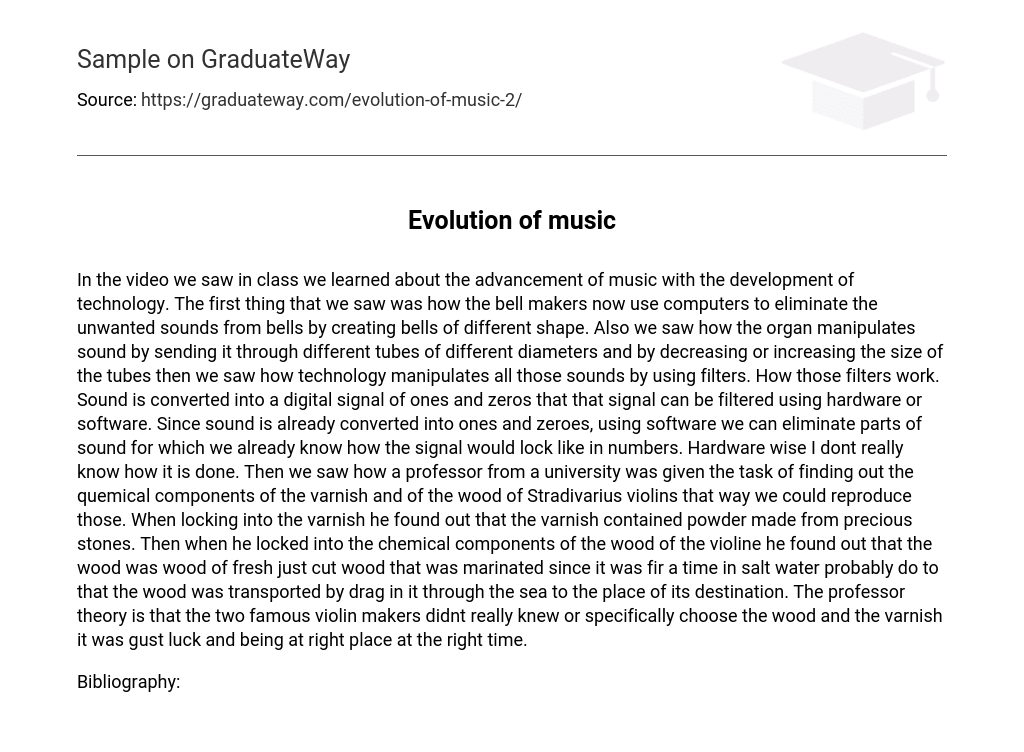In the video shown in class, we learned about the impact of technology on the advancement of music. One significant aspect highlighted was the use of computers by bell makers to create bells of different shapes and eliminate unwanted sounds. Additionally, the video demonstrated how sound manipulation can be achieved in organs through the use of tubes with various diameters and adjustable sizes. Furthermore, we were introduced to the role of technology in manipulating sounds through the utilization of filters. These filters work by converting sound into digital signals consisting of ones and zeros, which can then be filtered out using either hardware or software. Software allows us to remove specific parts of the sound that we already have knowledge about, represented in numerical form. However, I am uncertain about the exact process used for sound manipulation with hardware.
The task of determining the chemical composition of both the varnish and wood used in Stradivarius violins was assigned to a university professor. The goal was to replicate them. During the analysis of the varnish, it was discovered that it contained a powder derived from precious gemstones. Similarly, when examining the wood used in the violin, it was found that it came from freshly cut timber soaked in saltwater for some time. This suggests that the wood may have been transported by sea and coincidentally ended up at its intended destination. Hence, the professor theorizes that renowned violin makers did not intentionally or selectively choose their wood and varnish; instead, it was simply a stroke of luck being in the right place at the right time.





